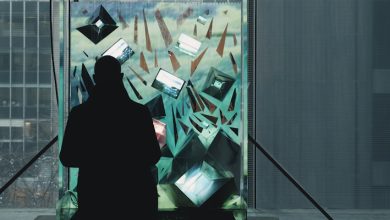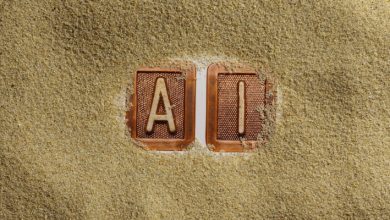The Rise of NFTs in 2024

- Exploring the Evolution of NFTs in the Digital Art World
- Analyzing the Impact of NFTs on Traditional Art Markets
- The Future of NFTs: How Blockchain Technology is Reshaping Ownership
- Navigating the Legal and Ethical Challenges of NFTs
- From Collectibles to Real Estate: Diverse Applications of NFTs
- The Role of NFTs in Redefining the Concept of Value in the Digital Age
Exploring the Evolution of NFTs in the Digital Art World
As we delve deeper into the realm of digital art, it is fascinating to witness the evolution of NFTs and their impact on the art world. Non-fungible tokens have revolutionized the way artists create, sell, and collect art in the digital landscape. This innovative technology has opened up new possibilities for artists to showcase their work and for collectors to own unique pieces of art securely on the blockchain.
One of the key aspects of NFTs is their ability to provide provenance and authenticity for digital artworks. This has been a game-changer for artists who previously struggled with copyright infringement and unauthorized duplication of their work. With NFTs, artists can now create digital art with confidence, knowing that their ownership rights are securely recorded on the blockchain.
Moreover, NFTs have also democratized the art world by allowing artists to bypass traditional gatekeepers such as galleries and auction houses. This direct-to-consumer approach has empowered artists to reach a global audience and receive fair compensation for their creations. As a result, we are seeing a surge in independent artists embracing NFTs as a means of monetizing their art and connecting with their fans.
Looking ahead, it is clear that NFTs will continue to shape the future of digital art by offering new opportunities for artists and collectors alike. Whether it is through virtual art exhibitions, digital art marketplaces, or collaborative projects, NFTs are poised to redefine the way we create, buy, and experience art in the digital age. As we explore the evolution of NFTs in the digital art world, we are witnessing a transformative moment that is reshaping the art industry for years to come.
Analyzing the Impact of NFTs on Traditional Art Markets
The impact of NFTs on traditional art markets is a topic of great interest and debate in the art world. NFTs, or non-fungible tokens, have gained significant popularity in recent years as a new way to buy and sell digital art. This has raised questions about how NFTs are affecting traditional art markets and what the future holds for the art industry.
One of the key ways in which NFTs are impacting traditional art markets is through the democratization of art ownership. NFTs allow artists to sell their work directly to collectors, cutting out the need for galleries and dealers. This has the potential to create a more inclusive art market, where artists from diverse backgrounds can thrive.
Another important aspect of the impact of NFTs on traditional art markets is the potential for increased transparency and authenticity. NFTs are built on blockchain technology, which provides a secure and verifiable way to track ownership and provenance. This could help to reduce issues of art fraud and forgery in the art market.
Overall, while the rise of NFTs has caused some disruption in traditional art markets, it also presents exciting opportunities for artists, collectors, and art enthusiasts alike. The future of art may be forever changed by the advent of NFTs, and only time will tell how this new technology will continue to shape the art world.
The Future of NFTs: How Blockchain Technology is Reshaping Ownership
In recent years, the world has witnessed a significant shift in the way ownership is perceived and recorded. This transformation is largely attributed to the rise of Non-Fungible Tokens (NFTs), which are digital assets representing ownership of unique items or pieces of content. NFTs are powered by blockchain technology, a decentralized and transparent system that allows for secure transactions and proof of ownership.
As we look towards the future, it is clear that NFTs will continue to play a crucial role in reshaping the concept of ownership. With blockchain technology at its core, NFTs offer a level of security and authenticity that traditional forms of ownership simply cannot match. This has led to a surge in interest from artists, collectors, and investors alike, who see the potential for NFTs to revolutionize the way we buy, sell, and trade assets.
One of the key advantages of NFTs is their ability to provide verifiable proof of ownership. Through the use of blockchain technology, every transaction involving an NFT is recorded on a public ledger, ensuring that the ownership of an asset is indisputable. This level of transparency not only protects buyers and sellers from fraud but also opens up new possibilities for the authentication and provenance of digital assets.
Navigating the Legal and Ethical Challenges of NFTs
Navigating the legal and ethical challenges associated with non-fungible tokens (NFTs) can be a complex and daunting task for creators and buyers alike. As the popularity of NFTs continues to rise in 2024, it is crucial to understand the legal implications and ethical considerations surrounding these digital assets.
One of the key legal challenges facing NFTs is the issue of intellectual property rights. Creators must ensure that they have the necessary rights to the content they are tokenizing to avoid copyright infringement. Additionally, buyers need to be aware of the terms of use and licensing agreements associated with the NFTs they purchase to avoid legal disputes down the line.
On the ethical front, questions have been raised about the environmental impact of NFTs, particularly in terms of energy consumption. The blockchain technology used to create and trade NFTs requires a significant amount of computing power, leading to concerns about carbon footprints. As such, it is essential for both creators and buyers to consider the environmental implications of their NFT transactions.
Moreover, there are ethical considerations surrounding the ownership and authenticity of NFTs. With the ease of creating digital copies, determining the true owner of an NFT can be challenging. This raises questions about the value and uniqueness of these digital assets, as well as the potential for fraud and misrepresentation in the NFT market.
In conclusion, while NFTs offer exciting opportunities for creators and collectors in 2024, it is important to navigate the legal and ethical challenges carefully. By staying informed about intellectual property rights, environmental impact, ownership issues, and authenticity concerns, individuals can participate in the NFT market responsibly and ethically.
From Collectibles to Real Estate: Diverse Applications of NFTs
NFTs have revolutionized the way we think about ownership and value in the digital world. While they were initially associated with collectibles like art and trading cards, their applications have expanded to include real estate.
One of the most exciting aspects of NFTs in real estate is the potential to tokenize properties, allowing for greater liquidity and fractional ownership. This means that investors can now own a small percentage of a property without having to buy the entire thing.
Additionally, NFTs can be used to represent ownership of physical real estate assets, such as buildings or land. This opens up new possibilities for investors to buy, sell, and trade real estate in a more efficient and transparent manner.
Overall, the diverse applications of NFTs in real estate are just beginning to be explored. As the technology continues to evolve, we can expect to see even more innovative uses for NFTs in the real estate industry.
The Role of NFTs in Redefining the Concept of Value in the Digital Age
In the digital age, Non-Fungible Tokens (NFTs) have emerged as a revolutionary concept that is redefining the notion of value in the online world. NFTs are unique digital assets that are stored on a blockchain, making them one-of-a-kind and impossible to duplicate. This uniqueness is what gives NFTs their intrinsic value, as they represent ownership of a specific piece of digital content.
NFTs have opened up new opportunities for creators, artists, and collectors to monetize and trade digital creations in a way that was not possible before. By tokenizing digital assets, individuals can now buy, sell, and own digital content with a level of authenticity and scarcity that was previously unattainable. This has led to a shift in how we perceive value in the digital realm, with NFTs becoming a new form of digital currency.
The rise of NFTs has also sparked debates about the value of digital art and collectibles. Critics argue that the value of NFTs is purely speculative and driven by hype, while supporters believe that NFTs have the potential to democratize the art world and empower creators by providing them with a new revenue stream. Regardless of where one stands on this debate, it is clear that NFTs are here to stay and will continue to shape the digital landscape for years to come.




